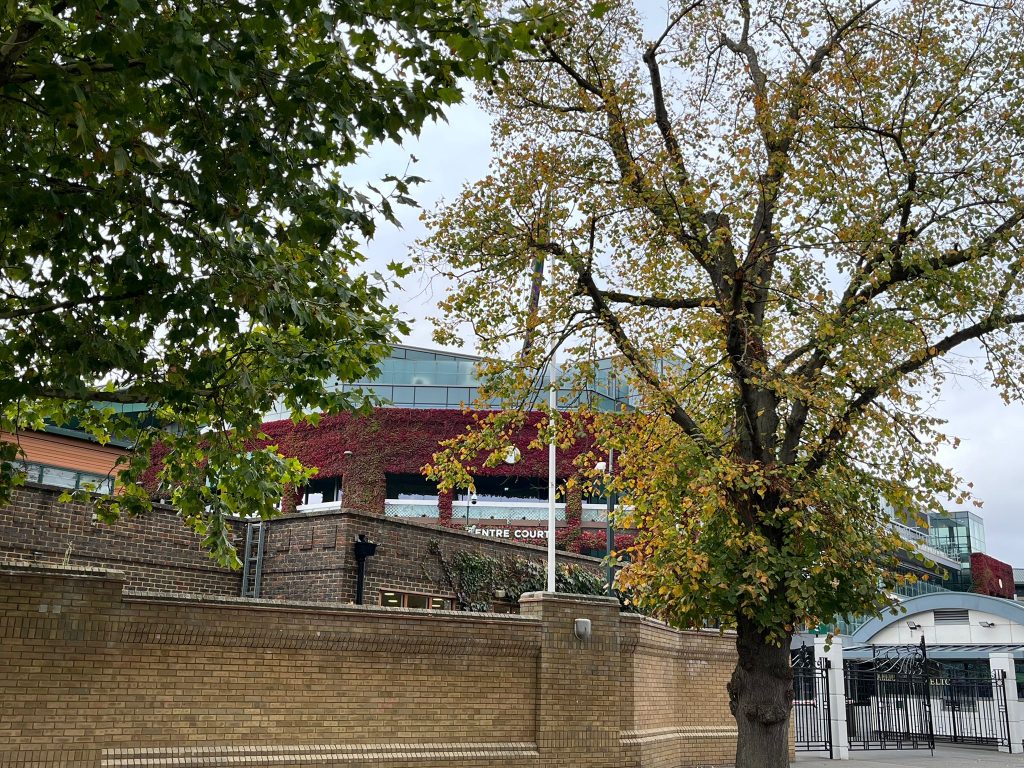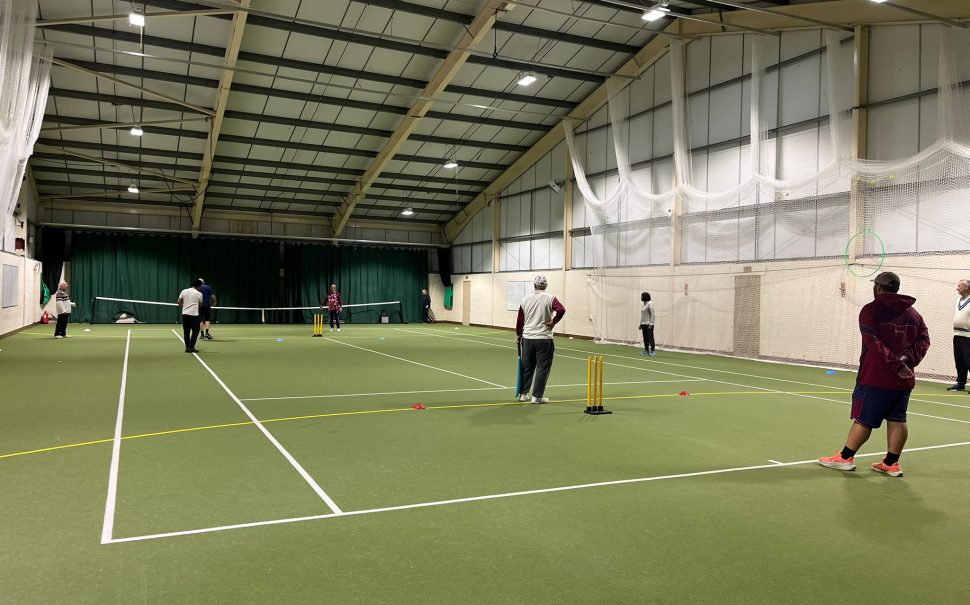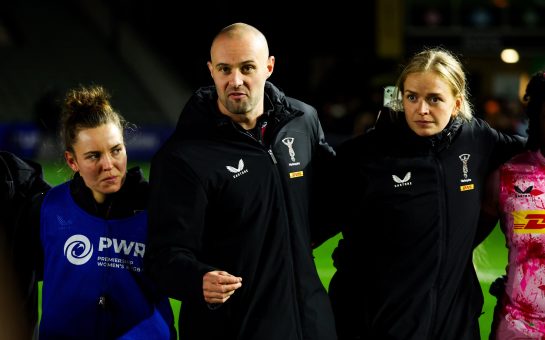Cricket can be humbling. But some cricket humblings are distinct.
For most cricket badgers, their first humbling at the crease comes against a county hopeful – an academy prospect with a future in the game who will flat bat the ball zipping past your ears.
That same spritely prodigy will then clean up your stumps at what seems like a million miles per hour.
However, sometimes these humblings come against 60-somethings who are fighting through dementia, arthritis or hip replacements, but playing with smiles on their faces, and socialising and exercising despite the challenges age has brought.
Sometimes these humblings come at a slower pace. Plastic bat in hand, one step at-a-time, walking not running.
Walking cricket is giving an older generation a second run at cricket, and that is humbling for many who think they are all-out.

Walking cricket takes teams of eight players batting and bowling over 16 overs each, with players batting in pairs guaranteed four overs at the crease together. When you’re out, your team loses five runs and you remain in the middle.
Runs behind square are not worth a risky ramp shot, given there’s only two runs up for grabs even against the boundary rope, so the slower format is a highlight reel of cover drives and straight shots.
A lightweight plastic ball replaces cork-and-leather, with zip and plenty seam movement.
Apart from that, it’s till the same energy-sapping, focused game of cat and mouse – even for the 13-year student of club cricket.
Jonathan Speller, cricket director at The Wimbledon Club, explained the Windmillers boast 36 players after launching in 2023 with just eight members, and even toured the continent to Vienna in 2024.
Speller said: “It’s reassuring to know that when we talk about lifelong participation in the game, we mean it now.
“We’ve had an ex-Test captain come back at 83 struggling with late-stage dementia, and you can hear he’s reliving his run up bowling to Ponting.”
Speller added: “We’re all cricket nuts, given a half a chance we’ll return to it.”
The impact of Walking Cricket, as far as Speller is concerned, is principally social.
He said: “Covid changed the landscape so much. There was a group of people that were isolated, weren’t as active as they wanted to be.
“How many people are looking for social interaction, a feeling of belonging?
“I’ve got a six and eight-year-old and all they want is to be accepted and liked, the same can be said for 80-year-olds.”
There is no better example of seeking social interaction and acceptance than former Sri Lanka captain DS De Silva.
Along with skippering his country, the leg-spinner was the first Sri Lankan to take a Test five-for on his way to 69 international wickets, and served as interim chairman of Sri Lankan Cricket after his retirement.
However, he was diagnosed with dementia and fell out of the sport until De Silva’s son, Dilshan, introduced him to the walking club.
Speller said: “DS came to watch and within 20 minutes wanted to play. There was not a soul who didn’t love hearing his experiences and ideas on why we play cricket.
“He said to me once, ‘the three leggies, then a loopy leggie, he’ll think he’s got me and I fire one in’ – he’s still got it.
“It’s wonderful that we delivered cricket he could play.”

Wimbledon play in leagues organised by the Surrey Cricket Foundation (SCF), with divisions founded in 2023, and in 2025 organised two competitive classes with friendlies’ pools for developing clubs.
Seventeen clubs and 370 active players will grow next season, with ten new clubs pencilled in for 2026 including East Molesey.
Simon Hards, Surrey Cricket Foundation’s assistant director of cricket participation, illustrated sky-high hopes for the future.
He said: “We’ve employed someone two days a week to get us to 50-odd clubs.
“In 2022 we changed the model, we started to go out and directly approach clubs, and we went from three clubs to seven, 11 teams in 2024, and another six this year.
“The ECB don’t currently recognise walking cricket and won’t fund it, so we’re taking the mantle locally.”
With exponential growth come problems of scale, and the gulf between those who play to socialise and those wanting to win is widening. Hards admitted a crossroads is happening now.
He said: “The spirit of walking cricket will always have to be around opportunities for people to improve their health, live longer, make new friendships, learn new skills.
“The little-c is getting bigger already with a second competition. I’ve spoken with other counties and we share the mentality it is about the benefits that cricket provides.
“I wouldn’t want to see big-c competition at the detriment of social benefits.”
The schismatic debate of community versus competition is worn threadbare in the running game at this point, but people like Paul Tait, 68, force you to think about it once again.
He has played Walking Cricket in Wallington for eight years with The Change Foundation after his wife spotted a poster on the door of Wallington library, and is, in his words, determined to play for as long as his knees let him.
Tait said: “I think it will go national and become more competitive, bigger clubs will jump on the bandwagon.
“I think that’s going to happen so we are preparing to revert to the inclusive nature of social networking.
“You’re starting to see the bigger clubs taking this a bit more seriously, and with that we will lose part of the reason why we joined.
Tait illuminated why the “walking” is as important, if not more important, than the “cricket”.
He said: “A lot of our group are quite happy for a knockaround like they’re with their grandkids on the beach.
“When you take up walking cricket, the emphasis is on increasing your social network of similarly aged individuals – ‘Have you enjoyed it, and can we now get a cup of tea please?’”
Polemic aside, Tait is wholeheartedly proud of what he has achieved.
He said: “The cricket was rubbish but I can honestly say I played on The Oval surface – and that means a lot for me. I played for Surrey and I’ve played county cricket.
“When you walk onto The Oval, you worry if your shoes are clean enough, and you tap your shoes to get any mud off before stepping on hallowed turf.”
Walking cricket is humbling.
Humbling for the young who have a lifelong cricket career, however amateurish, ahead of them.
Humbling for the older generation are adapting to a way of living never experienced before.
A humbling that is more than a trivial early dismissal, but one that makes you think about how you want to live and age.
Feature image: Joseph Terry





